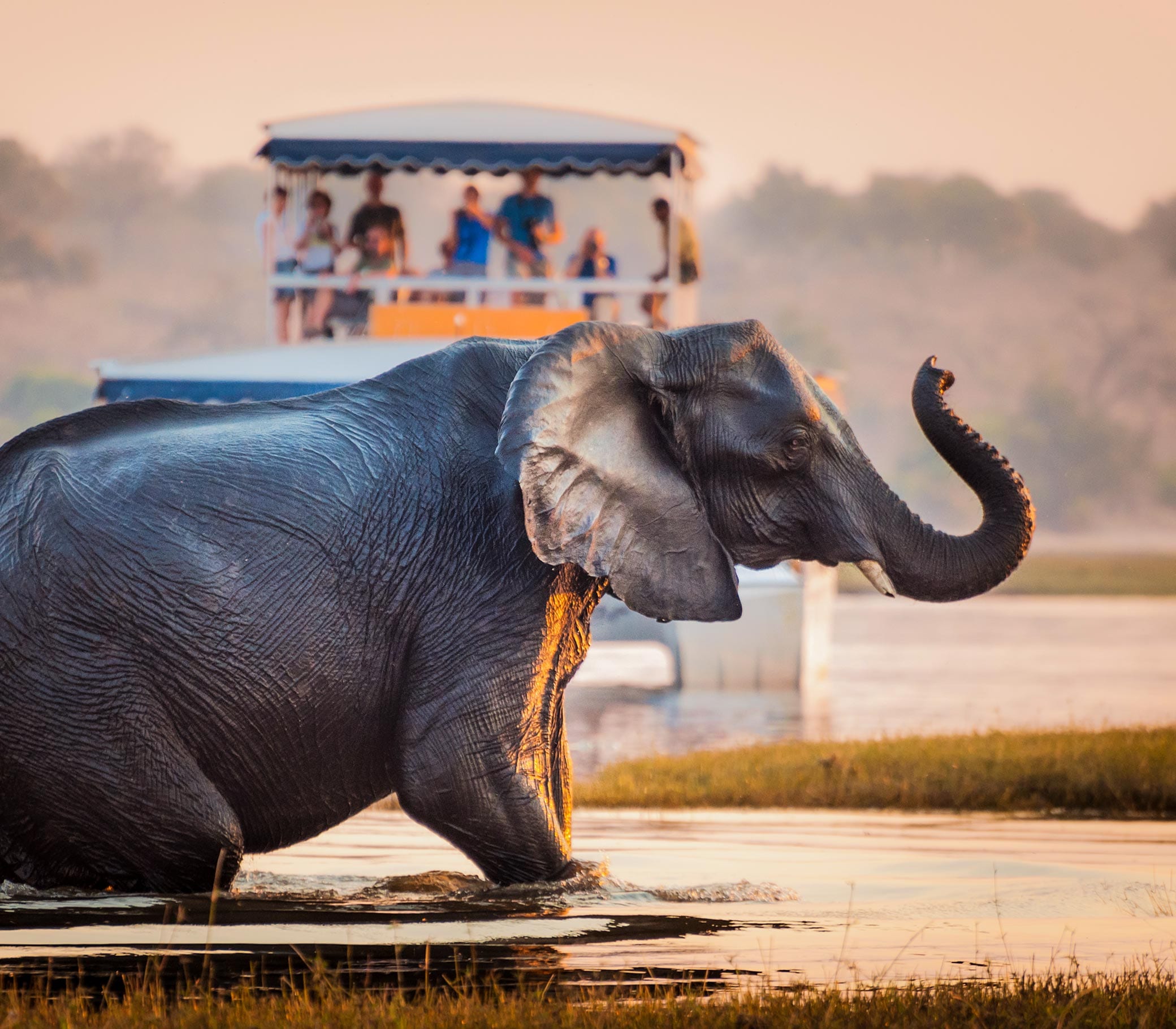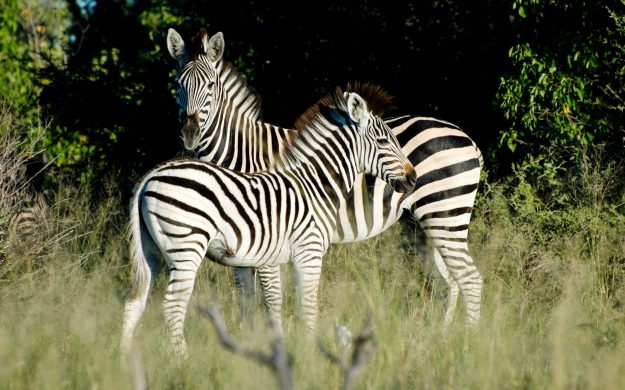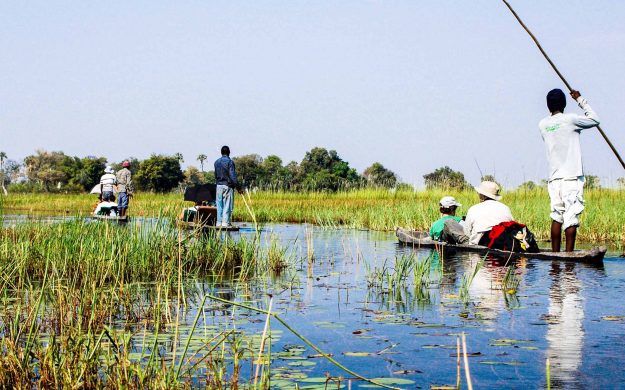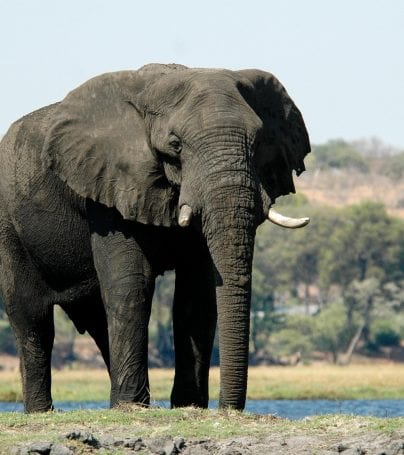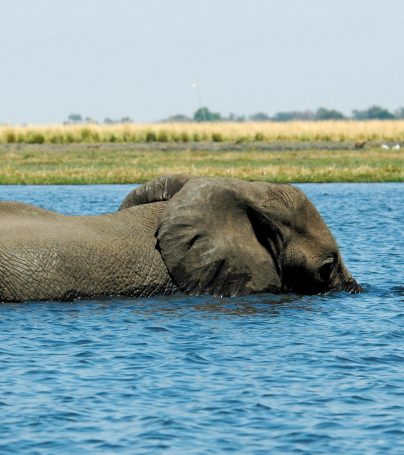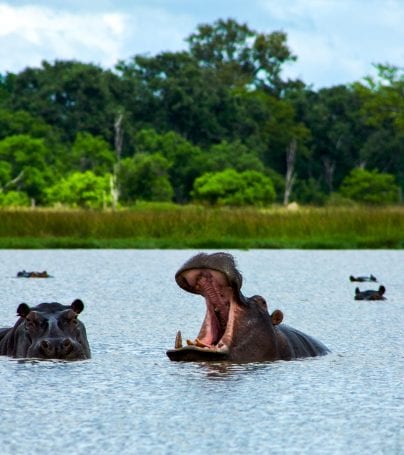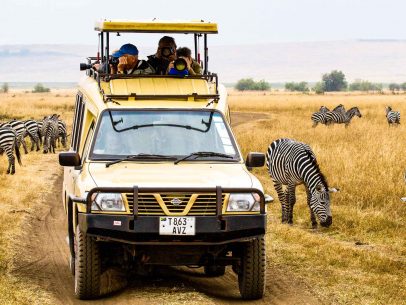Okavango Delta Adventure Tours
The Okavango Delta in Botswana is the world’s largest inland delta. The area was once part of Lake Makgadikgadi, an ancient lake that dried up some 10,000 years ago. Today, the Okavango River has no outlet to the sea. Instead, it empties onto the sands of the Kalahari Desert, irrigating 15,000 km² of the desert. Each year some 11 cubic kilometers of water reach the delta. Some of this water reaches further south to create Lake Ngami. The water entering the delta is unusually pure, due to the lack of agriculture and industry along the Okavango River. It passes through the sand aquifers of the numerous delta islands and evaporates/transpirates by leaving enormous quantities of salt behind. This precipitation processes are so strong that the vegetation disappears in the center of the islands and thick salt crusts are formed. The waters of the Okavango Delta are subject to seasonal flooding, which begins about mid-summer in the north and six months later in the south (May/June). The water from the delta is evaporated relatively rapidly by the high temperatures, resulting in a cycle of cresting and dropping water in the south. Islands can disappear completely during the peak flood, then reappear at the end of the season.
The Okavango Delta peoples consist of five ethnic groups, each with its own ethnic identity and language. They are Hambukushu (also known as Mbukushu, Bukushu, Bukusu, Mbukuschu, Ghuva, Haghuva), Dceriku (Dxeriku, Diriku, Gciriku, Gceriku, Giriku, Niriku), Wayeyi (Bayei, Bayeyi, Yei), Bugakhwe (Kxoe, Khwe, Kwengo, Barakwena, G/anda) and ||anikhwe (Gxanekwe, //tanekwe, River Bushmen, Swamp Bushmen, G//ani, //ani, Xanekwe). The Hambukushu, Dceriku, and Wayeyi are all Bantus who have traditionally engaged in mixed economies of millet/sorghum agriculture as well as fishing, hunting, and the collection of wild plant foods, and pastoralism.
The Bugakhwe and ||anikwhe are Bushmen who have traditionally practiced fishing, hunting, and the collection of wild plant foods; Bugakhwe utilized both forest and riverine resources while the ||anikhwe mostly focused on riverine resources. The Hambukushu, Dceriku, and Bugakhwe are present along the Okavango River in Angola and in the Caprivi Strip of Namibia, and there are small numbers of Hambukushu and Bugakhwe in Zambia as well. Within the Okavango Delta, over the past 150 years or so Hambukushu, Dceriku, and Bugakhwe have inhabited the Panhandle and the Magwegqana in the northeastern Delta. ||anikhwe have inhabited the Panhandle and the area along the Boro River through the Delta, as well as the area along the Boteti River.
The Wayeyi have inhabited the area around Seronga as well as the southern Delta around Maun, and a few Wayeyi live in their putative ancestral home in the Caprivi Strip. Within the past 20 years many people from all over the Okavango have migrated to Maun, and in the late 1960s and early 1970s over 4,000 Hambukushu refugees from Angola were settled in the area around Etsha in the western Panhandle.
The Okavango Delta has been under the political control of the Batawana (a Tswana sub-tribe) for several hundred years. Most Batawana, however, have traditionally lived on the edges of the Delta. Small numbers of people from other ethnic groups such as Ovaherero and Ovambanderu now live in parts of the Okavango Delta, but since the majority of the members of those groups live elsewhere and the habitation is recent they are not considered as part of the Okavango Delta peoples. There are also several Bushmen groups represented by a handful of people. These groups were decimated by diseases of contact in the middle part of the 20th century, and most of the remaining members have intermarried with the ||anikwhe.
The Okavango is home to a prosperity of wildlife and attracts thousands of visitors a year. There are number of camps within the delta region that cater to these visitors.
The delta provides a seasonal habitat to numerous different species. Among these are African elephants, the African buffalo, the hippopotamus, the lechwe, the topi, the blue wildebeest, the giraffe, the Nile crocodile, the lion, the cheetah, the leopard, hyenas, wild dogs, the greater kudu, the wable antelope, both the black and the white rhinoceros, the water monitor, zebras, the warthog, and the chacma baboon. The delta also includes over 400 species of birds, including the African fish eagle, the crested crane, and the sacred ibis.
Customize Your Dream Adventure
We are here to help craft tailor-made adventures for individuals, couples, families, and groups of explorers.
